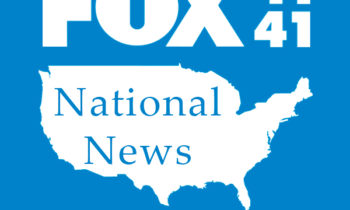
The Education Department has forgiven more than $45 billion of student loans for 930,500 longtime borrowers through the one-time income-driven repayment (IDR) account adjustment. If you’ve been repaying your student loans for at least a decade, you could be next in line — but you may need to consolidate before the April 30 deadline.
These types of loans require immediate consolidation to qualify for the maximum benefits of the IDR account adjustment:
Commercially held FFELP loans. Commercially held Perkins loans. HEAL loans.Parent PLUS loans in repayment for less than 25 years (or less than 10 years, if eligible for Public Service Loan Forgiveness). Direct loans with different past payment counts.
If your loans aren’t on this list, you likely don’t need to take action to benefit from the IDR account adjustment.
“For those folks who are really focused on achieving forgiveness of some type, try to be as proactive as you can,” says Stacey MacPhetres, senior director of education finance for EdAssist by Bright Horizons, a workplace education benefits provider.
Here’s how to stay ahead of the curve.
Complete the consolidation application
“Consolidating your student loans means basically you take a bunch of individual loans and you turn them into a brand new single loan,” explains Jill Desjean, senior policy analyst at the National Association of Student Financial Aid Administrators. This new loan is called a “Direct Consolidation Loan.” There’s no application fee to consolidate.
Confirm which types of loans you have before attempting to consolidate. Log in to your StudentAid.gov account, and select “loan breakdown” from your dashboard to see what your loans are called. “Direct,” “FFEL,” “Perkins” or “HEAL” may be in the name. If your servicer starts with “Dept. of Ed” or “Default Management Collection System,” your loan is held by the government, not a commercial lender. If your servicer starts with a company or school name, you must consolidate your loans to get credit for IDR forgiveness.
To access the application, go to StudentAid.gov/loan-consolidation. The online form will automatically populate most borrowers’ contact and loan information. Confirm accuracy. Next, you’ll be prompted to:
Select which federal loans you want to consolidate. Preview the amount of your new direct consolidation loan and its interest rate. Choose a repayment plan, even if you’ll be eligible for forgiveness. If you aren’t eligible for forgiveness now, you’ll want to sign up for an IDR plan going forward to keep earning credit toward forgiveness. The form will direct you to the IDR application, which requires you to input or recertify your income information. Choose a federal student loan servicer for your consolidation loan.Provide contact information for two references who can be contacted if the Education Department is unable to reach you.
The entire process can take less than 30 minutes and be completed in one sitting, says the Federal Student Aid Office. For assistance or to apply for consolidation over the phone, contact the Federal Student Aid Information Center at 800-433-3243.
Generally, you can’t consolidate an existing consolidation loan unless you’re applying to PSLF or adding another loan to the mix, like a Perkins loan that you didn’t previously consolidate.
Don’t miss the deadline
You must submit a consolidation application by April 30 to get the maximum benefit. Don’t put this off — though this consolidation deadline has been moved in the past, another deadline change is unlikely, experts say.
After application submission, the Education Department says most consolidation loans are disbursed within 60 days.
“Once you submit that application, there’s a whole behind-the-scenes process happening with the [Education] Department and any lenders, where they’re kind of making payments to one another,” Desjean explains. “Basically … the Department is buying your loans from whatever bank is holding them.”
In the past, consolidation could reset your payment counts to zero for IDR and PSLF forgiveness. That’s no longer always the case.
If you meet the April 30 consolidation deadline, your consolidation loan will get credit for the oldest underlying loan. For example, if you’ve been repaying a commercially held FFELP loan for 18 years, and a direct loan for five years, your new consolidation loan would get 18 years of IDR forgiveness credit after the adjustment.
“The most common example is somebody who goes to undergraduate, gets loans for undergraduate, then they take a break and go into repayment. And then years later, they go back for their graduate degree and they take out new loans,” says Betsy Mayotte, president and founder of The Institute of Student Loan Advisors.
After consolidation, your payment count may temporarily show as zero in your account. “Don’t freak out, they’re doing these adjustments in batches,” Mayotte says.
The payment recount should be reflected in your account by July 1, at the latest, per the latest Education Department guidance.
Partial payment credit is possible after April 30
You could get some credit for past payments on direct loans if you miss the April 30 consolidation deadline — but not as much. Instead of getting payment count credit for the oldest underlying loan in your new consolidation loan, you’ll get a weighted average of the payment counts of all underlying loans.
For instance, if you consolidate two $10,000 direct loans after the deadline, and one has been in repayment for eight years while the other has been in repayment for two years, your consolidation loan will get five years of credit toward IDR forgiveness. But if you apply to consolidate these loans by April 30, your consolidation loan will get eight years of credit.
For borrowers pursuing PSLF, the weighted average rule takes effect on May 1. It takes effect for all other borrowers on July 1.
Know the implications of consolidation
Consolidation is irreversible, so consider the pros and cons of consolidation before taking this action. Outside of the IDR account adjustment, consolidating certain types of loans can open the door to PSLF and IDR plans that can shrink your monthly bills. It can also simplify your payments if you have loans with multiple servicers. On the other hand, the process could lengthen your repayment period, which could increase the amount of interest you pay over time.
The following loan types require additional considerations.
Perkins loans
Think twice before consolidating your Perkins loans if you’re eligible for Perkins loan cancellation, which can forgive your debt if you work a public service job for at least four to seven years — much more quickly than PSLF or IDR.
HEAL loans
The government shuttered the Health Education Assistance Loan (HEAL) Program in 1998, but some borrowers are still repaying old HEAL debt.
If you consolidate a HEAL loan by April 30, the new consolidation loan will get credit toward IDR forgiveness for the oldest non-HEAL loan it includes.
If you have HEAL loans only, you should still consolidate them if you want to access IDR plans or PSLF. But your IDR forgiveness clock will start at zero after consolidating.
Parent PLUS loans
If you’ve been repaying parent PLUS loans for at least 25 years (or 10 years if you, the parent, are eligible for PSLF), you should automatically get forgiveness of your remaining debt under the IDR account adjustment. You don’t need to consolidate.
If you’ve been in repayment for close to 25 years, but you’re not there yet, consolidate before April 30 to get IDR credit for past periods of repayment for the oldest underlying loan. To keep making progress toward forgiveness, you must enroll in the Income-Contingent Repayment (ICR) plan, which is the only IDR option available for consolidation loans containing parent PLUS loans.
Consider consolidation carefully if you’re not near the 25-year finish line because your monthly bills can increase substantially under the ICR plan. Use the Education Department’s loan simulator to estimate the costs of different repayment scenarios.
More From NerdWalletLatest FAFSA Error Affects Aid for 200K, Offers for Everyone ElseNext Target in Biden vs. Junk Fees: Colleges, Student LendingBiden Just Erased $1.2B in Student Loans. Yours Could Be Next
Eliza Haverstock writes for NerdWallet. Email: ehaverstock@nerdwallet.com. Twitter: @elizahaverstock.
The article Do This by April 30 if You Want Loan Forgiveness This Year originally appeared on NerdWallet.

